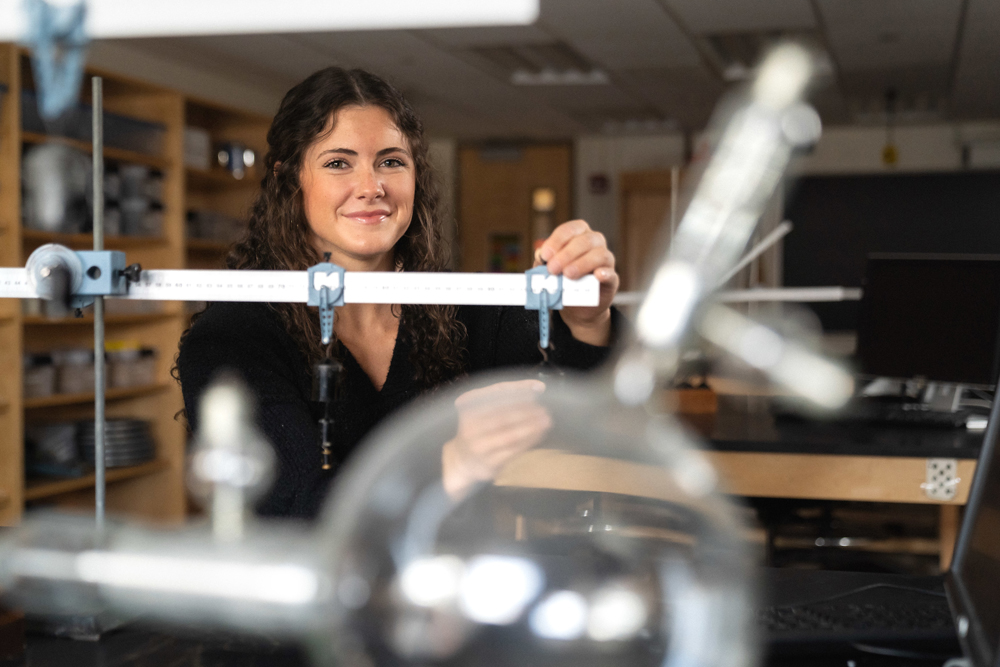SUNY Brockport student’s research aims to discover a piece of the Alzeheimer’s puzzle

Emma Sargent, a junior studying Physics at SUNY Brockport, is already making a mark on her field through her research. Sargent and her colleagues are working to find the cause of Alzheimer’s.
The summer of her freshman year, Sargent participated in Brockport’s Summer Undergraduate Research Program, working under Associate Professor Zachary Robinson to study the crystallization of Niobium Dioxide. The opportunity to participate in research so early in her education gave Sargent an edge as she searched for more research work.
“Some students graduate from programs without any research experience at all,” pointed out Aaron Weaver, an Instructional Assistant in Brockport’s Department of Physics. “Getting research experience as early as your freshman year is rare in larger programs.”
In the following year, Sargent applied to an internship at Clemson University through a program called REU (Research Experiences for Undergraduates). REU is a competitive program funded through the National Science Foundation that connects undergraduates to research opportunities across the country.
“My previous research experience definitely made me a more competitive candidate,” she said. “Dr. Robinson really poured his time into me to help me with my application.”
Sargent was accepted to the internship and spent 10 weeks onsite participating in research on Alzheimer’s, a disease that causes degeneration of the brain and is the leading cause of dementia. The study involved two proteins: one known to be present in all Alzheimer’s patients, and one capable of slowing the former’s progression.
Sargent and her colleagues were able to discover how these two opposing proteins behave together, as well as where, exactly, on their peptide chain they interact. These findings bring them one step closer to understanding how Alzheimer’s works, and how it may be combatted.
“It’s not a miracle finding but the more information we can find, the better,” Sargent said. “From here another lab can build off our information.”
“It’s all one big puzzle and it’s about providing a small piece,” added Weaver.
Now, Sargent’s team is working on getting their discoveries published so that others can utilize their work and carry on the search for a cure.
After her graduation next spring, Sargent plans to pursue a master’s degree in medical physics and continue using physics to help people in need.
“By getting your feet wet in research in your undergrad, it helps you to figure out if you want to go to grad school,” she said.
Provided information and photo




